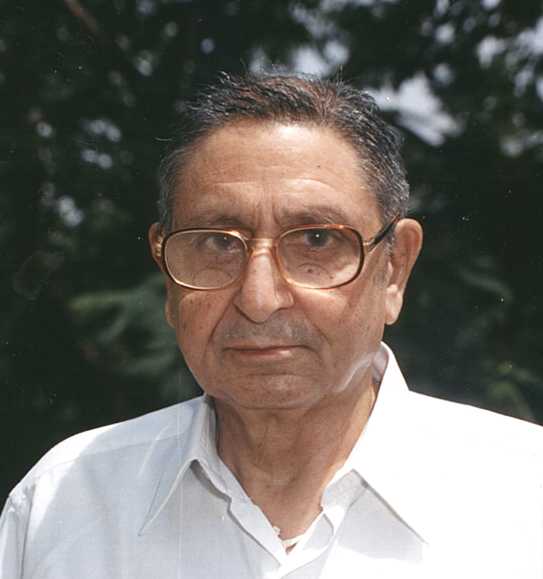|

|

|
|
Kashmiri Pandits' Association, Mumbai, India |

|
| | Home | January-March 2003 Issue | |
|
From
the Pages of History
On 13th July, Qadir's trial was being held in the Srinagar Jail, evidently to keep off excited crowds. Nevertheless, large crowds outside the jail raised slogans protesting against the Trial. They were joined by the prisoners inside the jail. Situation went out of control. Under the orders of the district magistrate, armed police opened fire. Twenty-one persons were killed. Wide disturbances in the city followed. Hindu shops were looted, some property burnt. In the communal outburst, three Hindus at Vicharnag, a suburb of Srinagar, were killed. Since then, 13th July is being observed as Martyr's Day. It is a Public holiday. The Background Certain influential Kashmiri Muslims settled outside Kashmir raised their voice against the inaction and neglect of education of the Muslims. At the request of the State Government, the Education Commissioner of Govt. of India (GOI), Mr. Sharp made some recommendations, which the Maharaja accepted. In 1924, the Viceroy Lord Reading received a memorial from some leading members of the Muslim community making demands of far reaching consequences, including grant of proprietary rights in land to peasants and a larger representation in government service. The Maharaja did not like it but GOI gave a clear message that it would not shy away from interfering. The Twenties of the last century witnessed a phenomenal rise in the popularity of Indian National Congress under the leadership of Mahatma Gandhi. To counter this, the British Government in India (GOI) pursued a communal policy. Kashmir, with Muslim majority population and ruled by a Hindu prince could not be lost sight of. A large number of organisations formed by influential Kashmiri Muslims settled outside the state, mushroomed up. The most vocal and prominent among them was called the Kashmir Muslim Conference of Lahore and Simla (later christened as All India Kashmir Muslim Conference). The famous poet, Sir Mohd. Iqbal was a member of this organisation. Leaders of these organisations believed that the backwardness and poverty of their brethren back home were the result of neglect and discrimination by the Hindu regime under the Dogra rule. They publicised their opinion widely and demanded immediate redressal. Back home, especially in the Valley, a sizeable number of Muslim youth with degrees from different Indian universities, particularly from the Muslim University, Aligarh formed the Reading Room Party. They would meet, discuss the opinions of the various Kashmiri Muslim organisations and echo their sentiments in different mosques. They took upon themselves, the task of educating the people about their political rights. Sheikh Mohamad Abdullah (M.Sc from Aligarh) who had resigned from the post of a teacher, emerged as the most popular of the members of the Reading Room Party. He drew large crowds when he addressed gatherings in mosques. A campaign against the Dogra rule was thus started. As was inevitable, it turned into a hate Hindu campaign, Dogra regime being equated with Hindu regime. All to the liking of the Political Department of the GOI. Maharaja Hari Singh, speaking as the representative of the Indian princes at the Round Table Conference in London, declared the princes' support to patriotic demands. This seems to have acted as the Catalyst. Abdul Qadir episode was the signal for 13 July 1931 outburst. Follow up
Actions The Viceroy directed the Resident to issue a notice to the Maharaja to remove the grievances of Muslims, to appoint an unprejudiced British officer deputed by the GOI as a enquiry officer to hold enquiry into Muslim grievances and demands, and a European Indian Service officer be appointed as the Prime Minister. The Maharaja had to accept the suggestions in total, though gradually. Glancy
Commission Also Col. E.J.D.Colvin of the Political department was appointed as the Prime Minister. Political prisoners were released and repressive laws withdrawn. Three other officers of the Indian Civil Service joined the Kashmir Cabinet as ministers. They held charge of important departments of Home, Revenue and Police. Thus the British Government of India achieved its objective, namely complete control of J&K administration. The event (13 July 1931) marked the beginning of political activities in the state.
|
|
|
JOIN US |
|
|


 13th
July 1931 is a landmark in the annals of modern Kashmir. On that day, open
demonstration against the despotic rule of the Maharaja took place. The flash
point was reached by the arrest and trial of one non-Kashmiri Abdul Qadir, for
his alleged seditious speech delivered by him in the precincts of Khanqah of
Shah Hamadan. Interestingly, Abdul Qadir had come to Kashmir as a cook of a
European visitor.
13th
July 1931 is a landmark in the annals of modern Kashmir. On that day, open
demonstration against the despotic rule of the Maharaja took place. The flash
point was reached by the arrest and trial of one non-Kashmiri Abdul Qadir, for
his alleged seditious speech delivered by him in the precincts of Khanqah of
Shah Hamadan. Interestingly, Abdul Qadir had come to Kashmir as a cook of a
European visitor.



